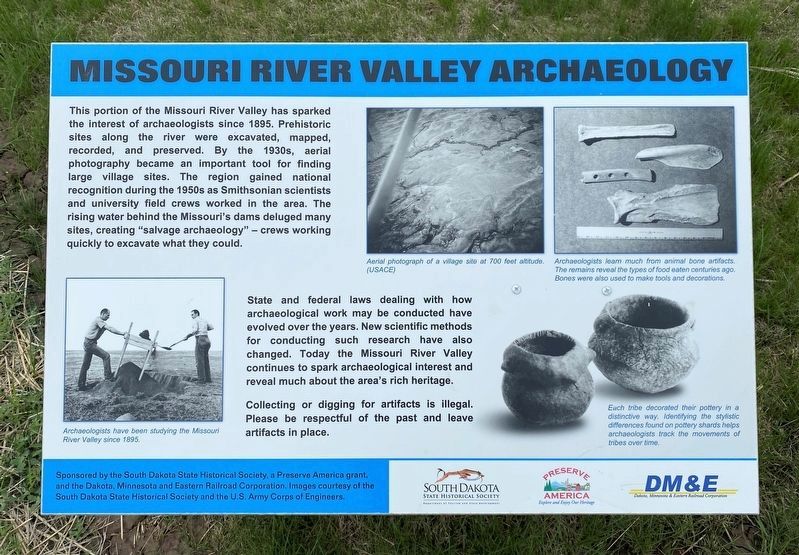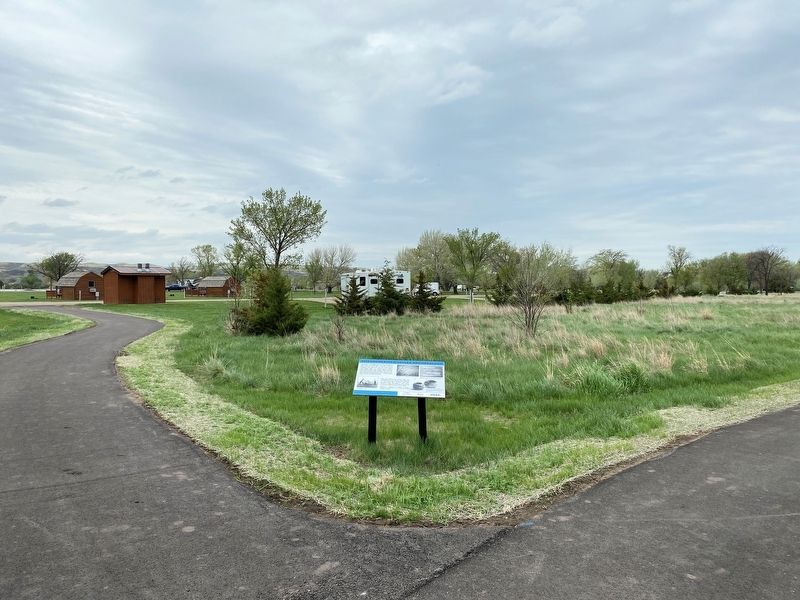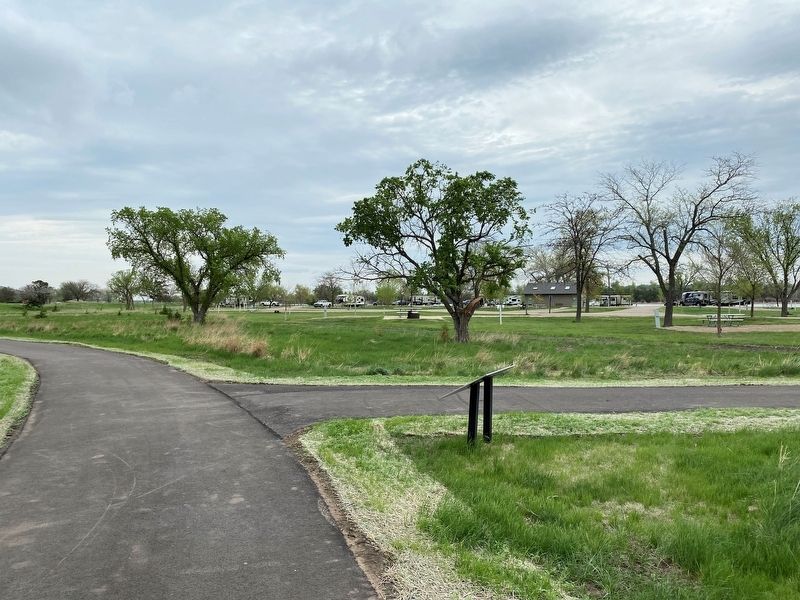Near Pierre in Hughes County, South Dakota — The American Midwest (Upper Plains)
Missouri River Valley Archaeology
State and federal laws dealing with how archaeological work may be conducted have evolved over the years. New scientific methods for conducting such research have also changed. Today the Missouri River Valley continues to spark archaeological interest and reveal much about the area's rich heritage.
Collecting or digging for artifacts is illegal. Please be respectful of the past and leave artifacts in place.
Archaeologists have been studying the Missouri River Valley since 1895.
Aerial photograph of a village site at 700 feet altitude. (USACE)
Archaeologists learn much from animal bone artifacts. The remains reveal the types of food eaten centuries ago. Bones were also used to make tools and decorations.
Each tribe decorated their pottery in a distinctive way. Identifying the stylistic differences found on pottery shards helps archaeologists track the movements of tribes over time.
Erected by the South Dakota State Historical Society, a Preserve America grant, and the Dakota, Minnesota and Eastern Railroad Corporation. Images courtesy of the South Dakota State Historical Society and the U.S. Army Corps of Engineers.
Topics. This historical marker is listed in these topic lists: Anthropology & Archaeology • Native Americans • Waterways & Vessels. A significant historical year for this entry is 1895.
Location. 44° 20.581′ N, 100° 16.463′ W. Marker is near Pierre, South Dakota, in Hughes County. Marker can be reached from Farm Island Road. Located in Farm Island Recreation Area. Touch for map. Marker is at or near this postal address: 1301 Farm Island Rd, Pierre SD 57501, United States of America. Touch for directions.
Other nearby markers. At least 8 other markers are within walking distance of this marker. Cultural Legacy (about 500 feet away, measured in a direct line); Site of Old Fort Sully (approx. 0.2 miles away); Entering Teton Country (approx. 0.3 miles away); Farm Island Causeway (approx. 0.4 miles away); Civilian Conservation Corps Camp (approx. 0.4 miles away); Much Was Accomplished (approx. 0.4 miles away); The First (Old) Fort Sully (approx. 0.4 miles away); CCC Camp S - 207, Farm Island, 1933 - 37 (approx. 0.7 miles away). Touch for a list and map of all markers in Pierre.
Credits. This page was last revised on June 2, 2023. It was originally submitted on June 2, 2023. This page has been viewed 61 times since then and 19 times this year. Photos: 1, 2, 3. submitted on June 2, 2023.


